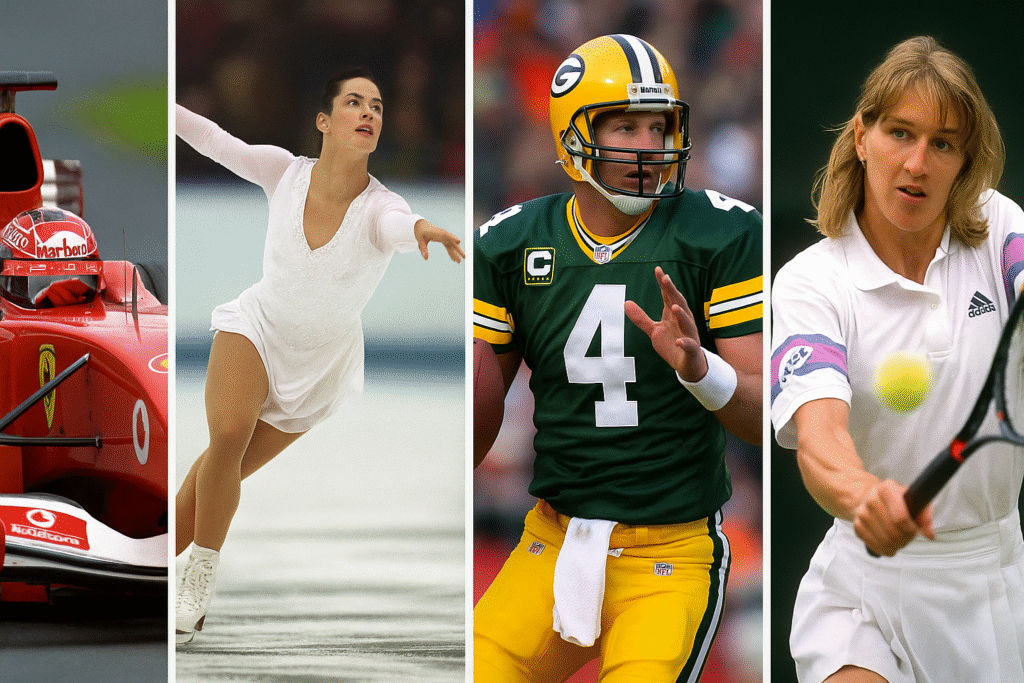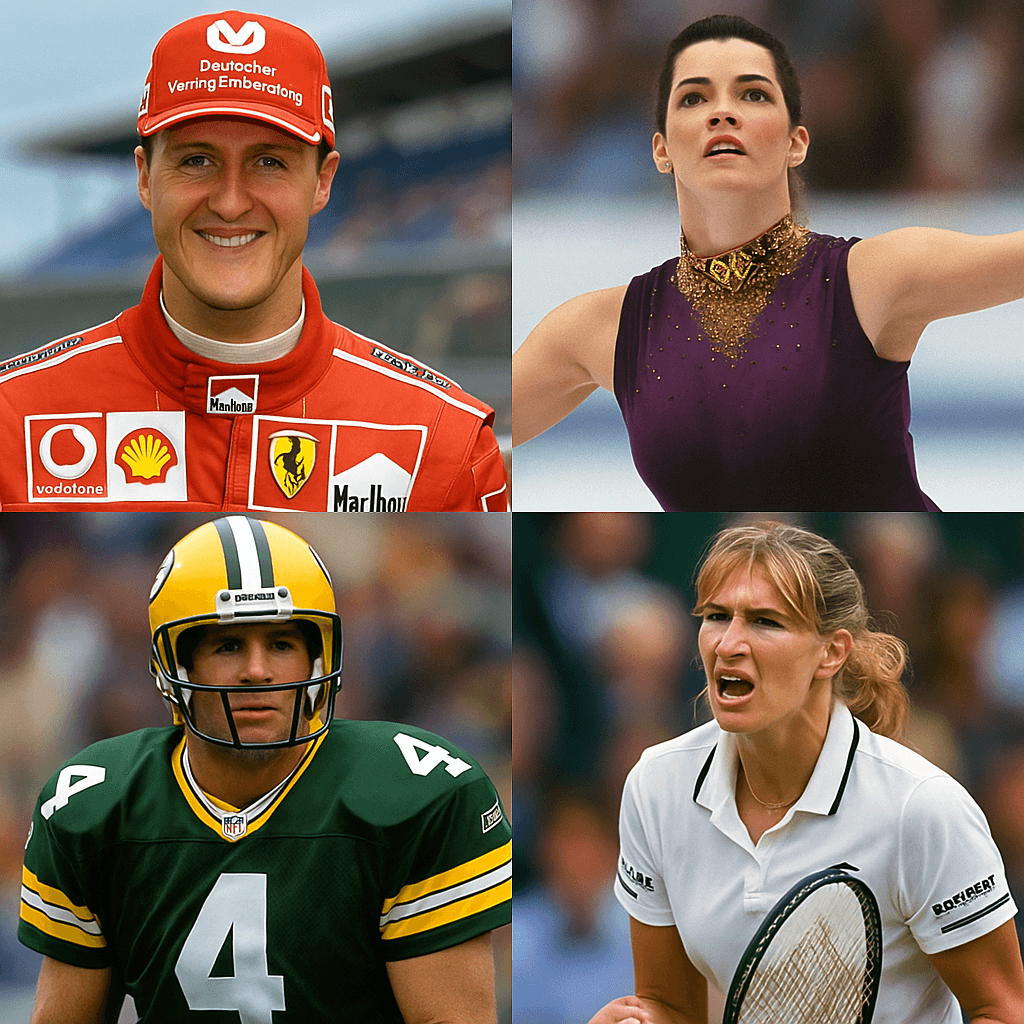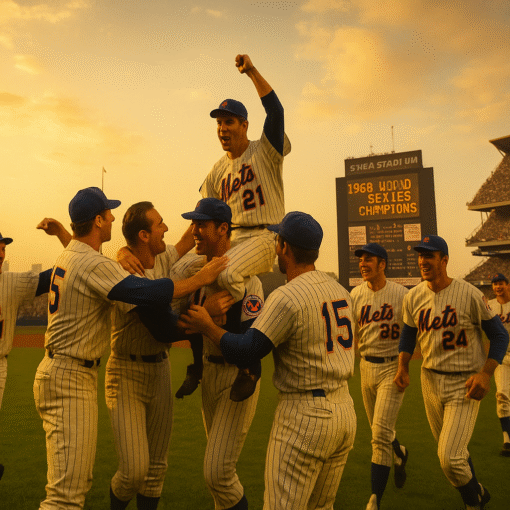The year 1969 gave rise to an extraordinary generation of athletes who would go on to leave an indelible mark on global sports. From the hardwood to the racetrack, from boxing rings to tennis courts, these legends embodied discipline, innovation, and resilience. This article explores the lives, careers, and lasting legacies of some of the most influential sports figures born in 1969, revealing the personal and professional journeys that made them iconic.
The Stellar Start: Early Years and Influences
The foundation for greatness is often laid in childhood, and the stories of sports legends born in 1969 are no exception. These athletes grew up during an era of cultural transformation, in families and communities that shaped their values, ambitions, and identities.
Michael Schumacher, born on January 3 in Hürth-Hermülheim, West Germany, was raised in a modest household where his father managed a go-kart track. Schumacher began racing at the age of four, and despite limited financial resources, his family’s unwavering support propelled him through local competitions. His early passion for speed and precision would evolve into one of the most decorated Formula One careers in history.
Nancy Kerrigan, born October 13 in Stoneham, Massachusetts, started figure skating at age six in a blue-collar family. Her father drove a Zamboni to afford rink time, while her mother, legally blind, remained her most devoted fan. Kerrigan’s early exposure to rigorous practice and working-class values instilled the discipline that would carry her to Olympic success and public admiration.

Brett Favre, hailing from Kiln, Mississippi, born on October 10, grew up in a sports-centric household with his father as his high school football coach. The rough-and-tumble environment of Southern football, paired with Favre’s raw competitiveness and arm strength, hinted at the future gunslinger quarterback who would rewrite NFL history.
Steffi Graf, born June 14 in Mannheim, West Germany, was introduced to tennis by her father at age three and began practicing seriously by age four. By the time she was thirteen, she was already competing professionally. Graf’s intense focus, unmatched discipline, and early training in a tennis-loving household laid the foundation for a historic career that would see her win 22 Grand Slam singles titles.
Common themes among these athletes were the influence of family, strong community ties, and an early affinity for physical challenges. Many faced adversity—be it limited resources, personal loss, or socio-economic hurdles. But it was precisely these trials that forged their grit and resilience. Coaches, mentors, and teammates also played pivotal roles, offering guidance and opportunity at critical moments. Even in youth, these individuals stood out—not only for their physical talents, but for their unusual focus, relentless energy, and leadership qualities. Whether in rinks, fields, or training halls, their passion was unmistakable. It wasn’t merely talent—it was purpose.
Rise to Glory: Defining Careers and Milestones
The sports legends of 1969 ascended from humble beginnings to dominate their disciplines, creating some of the most iconic moments in sports history. Their careers were marked by meteoric rises, record-shattering performances, and unforgettable rivalries.
Michael Schumacher made his Formula One debut in 1991 and quickly rose to prominence with Benetton and Ferrari. He would go on to win seven world championships, holding the record for most wins (91) until Lewis Hamilton surpassed it. Schumacher’s clinical precision, tactical brilliance, and adaptability in all weather conditions made him a formidable competitor, especially during his prime from 2000–2004.
Nancy Kerrigan, a two-time Olympic medalist, became internationally known for her elegance and strength on the ice. Her rivalry with Tonya Harding brought figure skating into the media spotlight. Kerrigan’s silver medal performance in Lillehammer in 1994, just weeks after a brutal attack orchestrated by Harding’s associates, became one of the most watched events in Olympic history and a testament to her resilience and poise.

Brett Favre had an illustrious 20-year NFL career, primarily with the Green Bay Packers. He was the first NFL quarterback to reach 70,000 passing yards and won three consecutive MVP awards (1995–1997). Known for his durability, he started 297 consecutive games, a feat unmatched in the high-impact world of football. His flair for dramatic comebacks and no-holds-barred play style made him a fan favorite and a future Hall of Famer.
Steffi Graf dominated the world of tennis with a career that redefined athletic excellence. She turned pro at just 13 and went on to win 22 Grand Slam singles titles, including a calendar-year Golden Slam in 1988—winning all four majors and Olympic gold in the same year, a feat unmatched in tennis history. Graf’s powerful forehand, footwork, and mental toughness made her a relentless competitor who transformed the women’s game.
What united these careers were not just the statistics, but the narratives: the underdog triumphs, the emotional comebacks, and the sheer longevity that inspired millions. Each athlete brought something unique—be it Schumacher’s dominance, Favre’s grit, Kerrigan’s elegance, or Graf’s unrelenting drive. Their rivalries and team dynamics also fueled their greatness. Favre’s duels with Warren Sapp, Schumacher’s battle with Mika Häkkinen, Kerrigan’s spotlight moment in Lillehammer, and Graf’s legendary matches against Monica Seles, Martina Navratilova, and Gabriela Sabatini are etched into sports history. These weren’t just competitions—they were sporting dramas that defined eras.
Beyond the Arena: Personal Life and Contributions
Behind the medals, trophies, and headlines, these sports icons lived full and complex lives that extended beyond competition. Their personal relationships, values, and off-field initiatives have played a crucial role in shaping their legacies.
Michael Schumacher, famously private, has always kept a close-knit family life. He married Corinna Betsch in 1995, and together they raised two children, including son Mick, who is now a Formula One driver. Schumacher’s post-retirement years were marked by his involvement in environmental and children’s charities, including UNESCO and the Red Cross. His tragic skiing accident in 2013 shifted the public focus from his sporting achievements to the fragility of life—even for heroes.
Nancy Kerrigan has been an advocate for mental health and eating disorder awareness in athletes. Married to her former agent, Jerry Solomon, she’s raised three children while staying active in broadcasting, coaching, and speaking engagements. Her advocacy and resilience have made her a respected voice in women’s sports and Olympic history.

Brett Favre, a self-proclaimed country boy, has navigated a life of contradictions: record-setting quarterback and family man, public hero and controversy figure. Yet through it all, Favre has remained active in charitable work, especially through the Brett Favre Fourward Foundation, which supports disadvantaged and disabled children. Post-retirement, he’s become a vocal advocate for athlete brain health and concussion research.
Steffi Graf, known for her grace on and off the court, married fellow tennis legend Andre Agassi in 2001. The couple has two children and shares a commitment to philanthropy. Graf founded Children for Tomorrow, a non-profit organization that provides psychological support to children affected by war and crisis. She has also supported numerous causes related to education and health, embodying the same focus and discipline in her humanitarian efforts as she did in her athletic career. Each of these athletes balanced intense career pressures with personal evolution. They navigated family, public scrutiny, financial complexities, and health challenges—all while maintaining relevance and purpose after retirement. Their personal choices, both celebrated and scrutinized, humanize them and deepen our appreciation for their journey.
Legends’ Legacy: Lasting Impact on Sports and Society
The sports legends born in 1969 left more than records and highlights; they reshaped how sports are played, perceived, and celebrated across the globe.
Michael Schumacher’s influence on Formula One is vast. His technical feedback revolutionized car development, and his fitness standards elevated the physical demands of the sport. He became a symbol of German precision and excellence, inspiring a generation of European drivers and engineers. His name remains synonymous with greatness, perseverance, and professionalism.
Nancy Kerrigan, beyond her Olympic career, helped popularize figure skating in the United States during the 1990s. She broke stereotypes around femininity and athleticism and brought visibility to athletes recovering from trauma and adversity. Documentaries and films, such as I, Tonya, revisited her story, reframing her legacy within a broader cultural context.

Brett Favre’s legacy is felt every Sunday in the NFL. His rugged, improvisational style helped redefine the quarterback position. He inspired countless young players to lead with emotion and heart. His media presence and candid interviews made him a relatable figure, a “people’s champion” who remained accessible despite his fame.
Steffi Graf redefined the global perception of women’s tennis. Her 22 Grand Slam titles and 1988 Golden Slam remain unmatched, and her dominance through the 1980s and 1990s helped elevate the professionalism and competitiveness of the women’s game. Graf’s powerful baseline play and graceful athleticism influenced generations of players and contributed to making women’s tennis one of the most watched sports worldwide. She also helped shift public appreciation of mental strength, humility, and consistency in sport.
These athletes have been immortalized through awards, halls of fame, and media tributes. From ESPN retrospectives and autobiographies to Netflix features and museum exhibits, their stories continue to educate and inspire. Importantly, their impact goes beyond sports. They’ve shaped public ideas of resilience, identity, and heroism. They’ve demonstrated how sports can be a mirror for societal values and a platform for change. Their dedication, integrity, and humanity serve as a blueprint for future generations—not just in winning, but in leading.
Conclusion: 1969’s Lasting Gift to the World of Sports
The sports legends born in 1969 didn’t just achieve greatness—they redefined what greatness means. Their stories blend triumph and trial, fame and humility, excellence and empathy. From racetracks and ice rinks to gridirons and clay courts, they etched their names into history not only through victory, but through vision.
As the world evolves, their legacies continue to resonate—reminding us that behind every champion is a story of early dreams, hard-fought battles, and the courage to live boldly, both in and out of the spotlight.
Want to Explore More About the Year 1969?
Dive deeper into the remarkable events and cultural icons of 1969 with our in-depth review of 1969 – The Year Everything Changed by Rob Kirkpatrick. Discover how politics, music, sports, and society collided to shape a transformative era.
Read the Book Review
